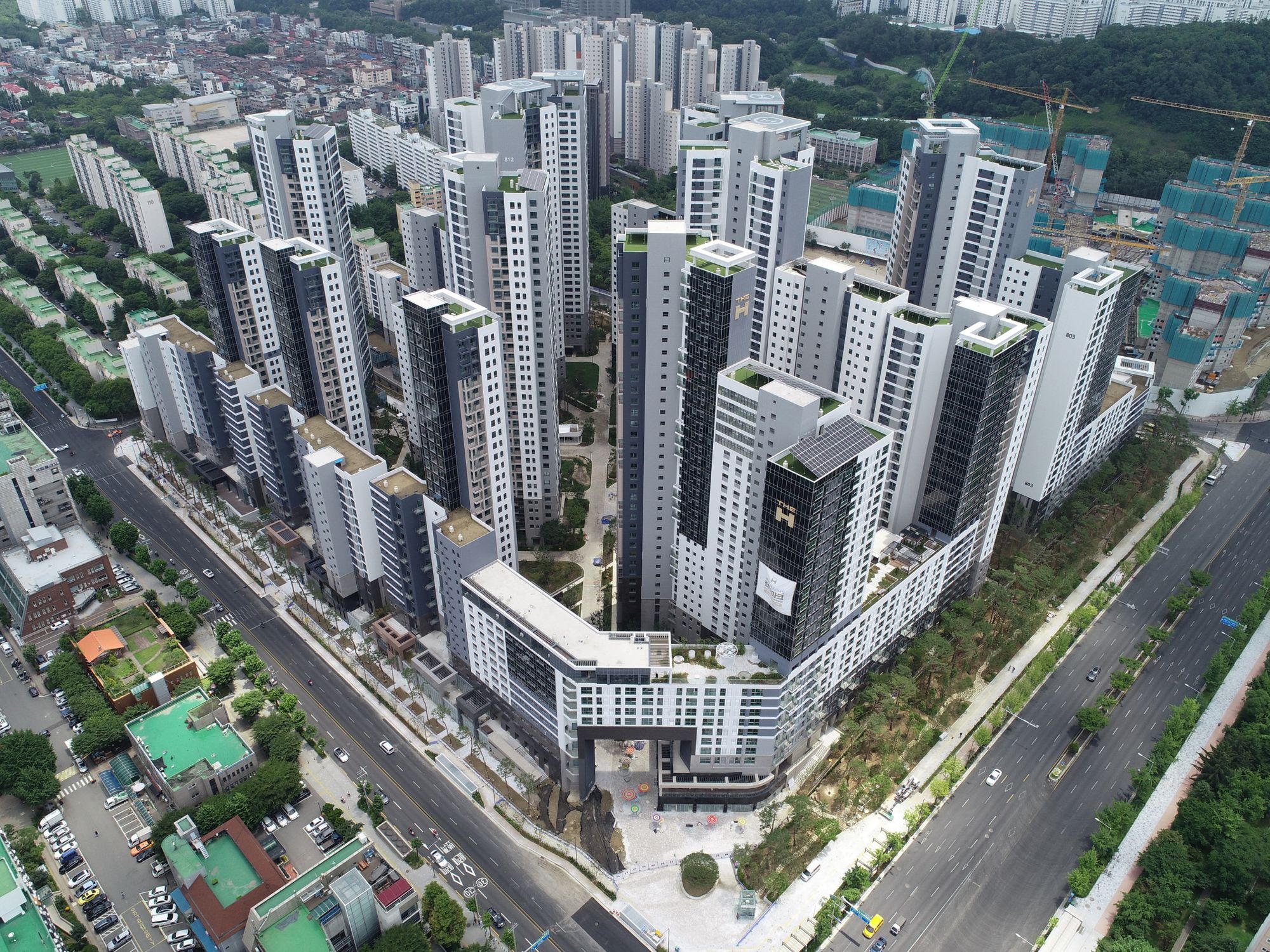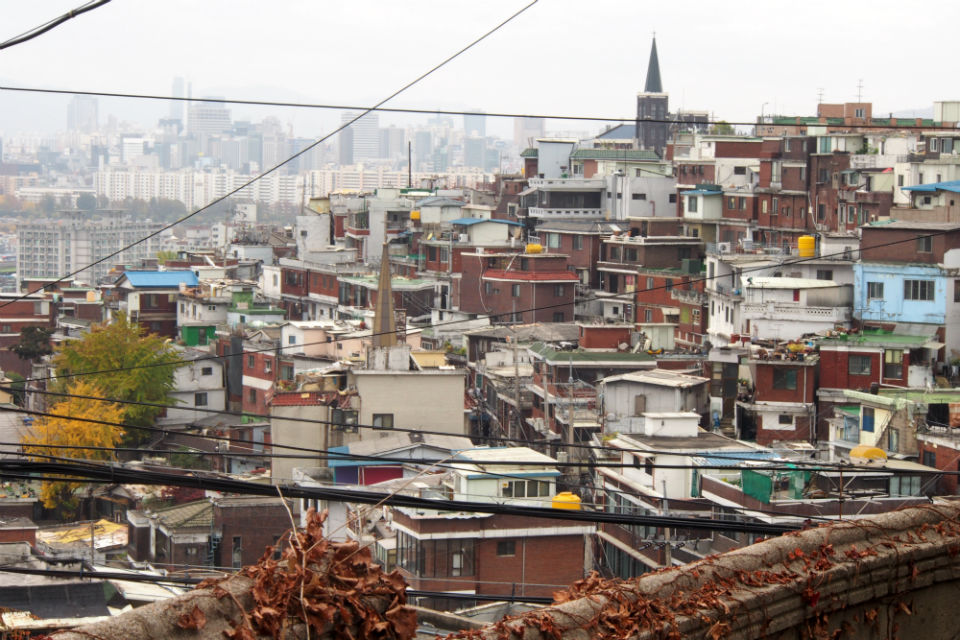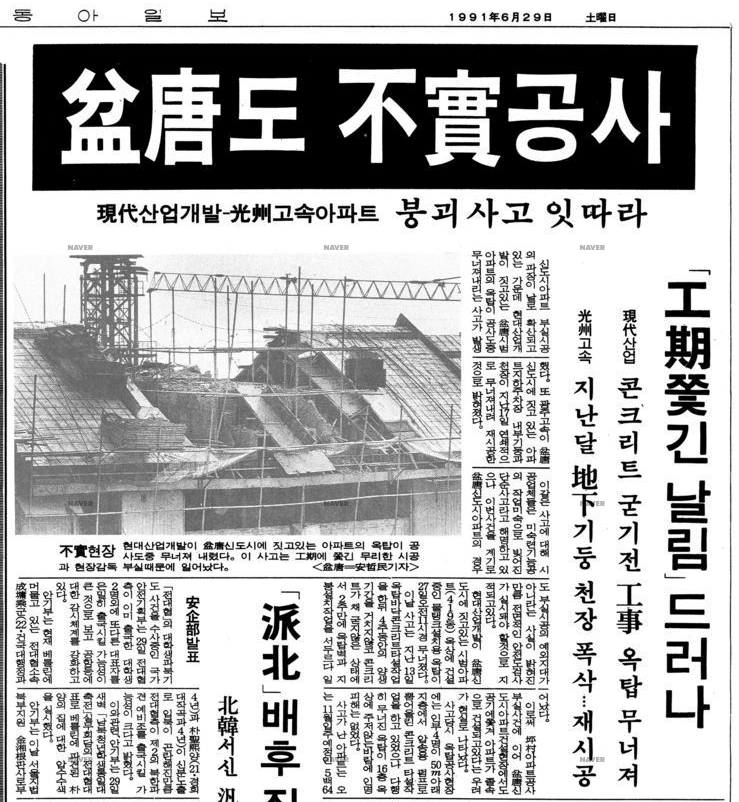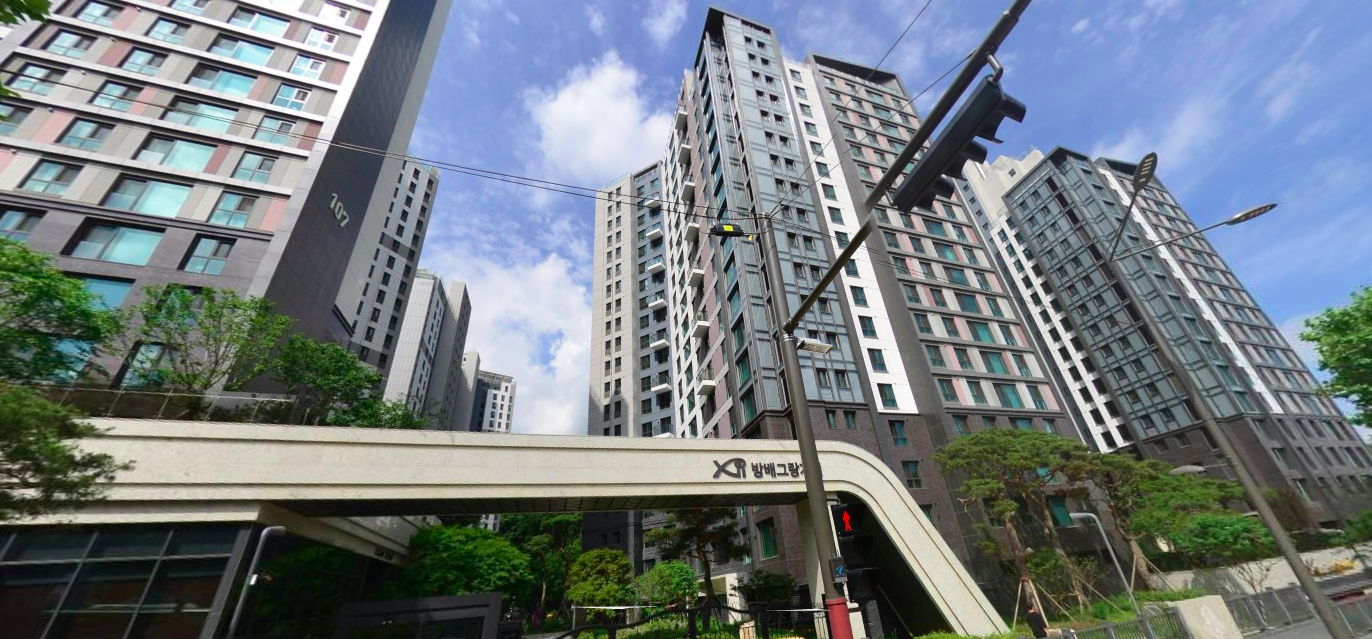
Crumbling Apartments of South Korea
All those residential towers stretching till the horizon. Apateu dominates the South Korean landscape. It's also often terribly built.
At a luxury apartment complex in Seoul's well-to-do Seocho District, residents complain of intolerable chemical stench. Completed only a year ago, the project sold out despite commanding 3 billion won (2.25 million dollars) for a 84 square-meter unit on the lower side of the price spectrum. And yet water is said to drip down the elevator shaft during heavy rain. Trees on the ground are mysteriously dying. Some owners speak of icicles forming inside apartments in winter months due to poor insulation.
This is Bangbae GranXi, built by GS Engineering and Construction, and it's not the only large residential compound in South Korea to court extensive media coverage for architectural shortcomings. Similar horror stories concerning newly built high-rise residences are being heard from all corners of the country.
Promoted by the government as a solution to the urban housing crunch during the rapid industrialization of the 1960s and 70s, apateu 아파트 as they are known in Korean have become the nation's dominant, even preferred, form of dwelling, now making up some 50 percent of available housing. In the administrative capital, Sejong City, that share reportedly rises to nearly 84 percent.
For South Koreans who grew up with and in them, myself included, there isn't anything odd about these tall structures, so desensitized the population is to the ubiquity and generic design: numbered buildings grouped together like a village and serviced by a little commercial block (sangga 상가 in Korean) containing the necessities of life—like a 24-hour convenience store, a small supermarket, a dry cleaner, bakeries and several cafes as well as eateries selling staples such as gimbap, fried chicken and localized Chinese food that South Koreans love so much.
All that, in addition to parking space, round-the-clock security and central management, has earned apateu a reputation for comfort and convenience, despite its brutalist aesthetic evoking urban slums. It's not unusual to hear the sentiment that "apartments still beat all other forms of housing" whenever criticisms of them arise, and the country keeps on building them—nearly 400,000 units each year between 2015 and 2019, and more than 310,000 in 2020.

It also makes it easy to forget how terribly shoddy many of them are.
In January, the outer wall of a residential tower under construction by Hyundai Development Company collapsed in the southern city of Gwangju, killing six workers.
Hyundai Engineering and Construction, another major player in the apartment-building industry (separate from Hyundai Development Company), came under fire that same month. Residents of one building at THE H Xi Gaepo, the firm's prestige project in Gangnam, claimed that the elevators were so loud it felt as though they were "living in huts next to a railway". Critics alleged the company installed high-speed elevators without putting enough distance between them and the residential units. And late July, marble slaps used to cover the walls of the common area fell several meters and shattered into pieces. Fortunately no one was hurt.
GS Engineering and Construction, responsible for Bangbae Granxi at the center of the latest controversy, has been trailed by accusations that three of its properties were contaminated by radon, a known carcinogen, at levels exceeding the government-mandated limit.
If these are more extreme examples of an industry out of control, routine are complaints of inadequate sound-proofing, leaky pipes, mold and underground garages that flood in rain. The most disturbing of them was made public by the broadcaster MBC in July, that feces wrapped in plastic bags was found inside the ceilings of completed units at a residential complex in the western city of Hwaseong.
While not exactly life-threatening, the news led to an acknowledgment that construction sites often lack toilets and workers have no choice but to relieve themselves "in some hidden corners" as necessity arose. On social media, rumors swirled, without evidence, of how most new apartment buildings each contain one ddongbang 똥방—a "shit chamber" where workers' excrement is collected and buried under cement, unbeknownst to subsequent occupants.
It's no secret inside South Korea that shiny apateu towers, often glamorously portrayed in K-dramas as backgrounds to sizzling romances and antics of the rich, aren't all that they are made out to be, even if they seem better than the alternatives.
Long before the current debate on poor quality of new housing, alarm bells were rung in the 1990s following reports that construction companies were using sand collected from the sea with worrying contents of salt in large-scale residential developments, including in what was to become Seoul's wealthy southern suburb, Bundang.

In the following decade, much ink was spilled on the proliferation of the so-called "new home syndrome" (saejip jeunghugun 새집증후군), better known in English as the "sick building syndrome". Defined by one source as "a situation in which the occupants of a building experience acute health- or comfort-related effects that seem to be linked directly to the time spent in the building", it plagued a staggering third of South Korean apartments aged less than two years, suggested a 2004 (albeit rather small-sized) survey by the Korea Consumer Agency.
The government introduced some regulations in 2006 to curb the emission of volatile organic compounds in new apartments, blamed for the symptoms of headache, fatigue, itchy skin and irritation of the respiratory tract. But the problem never went away, spawning special businesses that claim to eliminate the harmful substances before residents move into their new apartments.
Even to this day, one common, if dubious, method—called "bake out"—on how occupants can prevent the new home syndrome themselves circulate openly on media platforms, webpages of medical professionals and even the Korea Consumer Agency site.
"It's helpful to conduct a 'bake out' before moving into a new building. Open all cabinets, close all doors and maintain the interior temperature between 35 and 45 degree celsius for more than seven hours before opening the windows and ventilating the space for one hour. Repeat four to five times."
Doing so apparently forces some of the toxin out into the air and makes the apartment more habitable.

As to how such toxin-laden homes with so many flaws can get sold at all is a mystery, but some of the blame for the predicament lies with South Korean consumers, who are accustomed to seeing their apateu as ephemeral to begin with.
In 2014 laws were changed to allow buildings that are only thirty-years-old to be razed and rebuilt under certain conditions (the previous requirement was forty years). Often cited government data indicates that apartment buildings in South Korea last on average for less than 27 years. After that, it simply gets destroyed to make space for brand-new, usually taller towers in a phenomenon known as jaegeonchuk 재건축—"reconstruction".
Many owners themselves push for old residential complexes to be replaced in this way because it drives up the property value considerably (and the profit pays for the cost of reconstruction and then some). Why bother holding on to aged, decrepit housing when a newer, more expensive one can be had? And in that case, why should construction firms go the extra distance to build anything decent when the building is meant to be in service for three decades at most?
Which isn't to absolve corporations of all responsibility. In January the left-leaning paper Kyunghyang Shinmun reported, "All top ten domestic construction firms have been penalized for carrying out substandard work." The worst offender was Hyundai Engineering and Construction, receiving penalty points on 14 occasions over a two-year period.
And the number of complaints filed with the Ministry of Land, Infrastructure and Transport over poor quality of new apartments has been risen steeply, from 4,089 in 2017 to 7,686 last year.
Whereas in the past apartment owners "tried to sweep the problem under the rug for fear that the home value would fall, more are now becoming vocal when it comes to addressing subpar construction at new residential towers and demanding a fix," diagnosed Chosun Biz, the business news wing of the country's biggest newspaper Chosun Ilbo.
My parents are lucky. They didn't buy into a new building, and their 85 square-meter flat in Seoul's far eastern Songpa district suffers only from cracked outer walls, water leaks through the window frames on the front-facing balcony, and peeling veneer on built-in closet doors.
They haven't found any shit hidden in the ceiling, and nothing is quite crumbling, yet.
Cover image: The H Xi Gaepo in Gangnam has been in the spotlight for construction defects like many new residential developments in South Korea (source: Hyundai Engineering and Construction)
